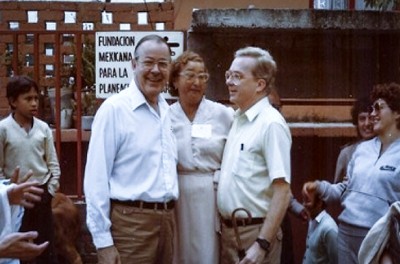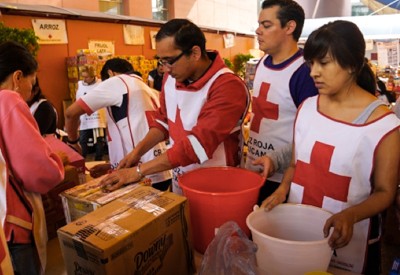Speeches Shim


Between 1965 and 1977, USAID did not implement programs in Mexico following a global realignment of assistance efforts. It was not until the late 1970s that USAID resumed its development programming, focusing on population and family planning. Within two years of USAID’s re-entry into Mexico, USAID became the lead donor in the health and population sector, providing assistance across virtually every program area, including service delivery, information services and communication, data collection and analysis, training, operations research, and contraceptive supplies.
A difficult but important moment for American foreign assistance in Mexico occurred in response to the 1985 earthquake. An earthquake measuring 8.1 on the Richter scale killed more than 4,000 people in Mexico City. The U.S. response to the tragedy was immediate and massive. Within a week, over 1,000 U.S. disaster assistance personnel from a dozen United States Government agencies, local government, and private institutions were in Mexico City. First Lady Nancy Reagan and USAID Administrator Peter McPherson also visited to express their sympathy for and solidarity with the people of Mexico. USAID demonstrated a tremendous capacity to deliver rapid, essential, and substantial humanitarian aid at a moment of great need.

The strong cooperation between the United States and Mexico has produced some key successes over the course of the bilateral relationship. One major success includes the establishment of the Mexican Conservation Fund, which was a new concept whereby funds, for the first time, were placed in an institution that the Government of Mexico did not control. Subsequently, a multidisciplinary group of 21 environmental specialists, receiving joint funding from the United States and the Government of Mexico, carried out an extensive consultation process with over 250 conservation organizations in Mexico. The result was three additional Mexican conservation funds, including the protection of the Meso-American Reef and the Gulf of California. The model has been replicated by more than 20 countries around the world and is now an international best practice.

Another successful model of cooperation includes USAID’s support of exchanges between Mexican and other governments to share information on various best practices to address common development challenges. USAID also invested in university and state-level partnership programs to support scholarships for indigenous populations. Other examples of collaboration include U.S. support to the Mexican Government to control tuberculosis outbreaks along the U.S.-Mexico border, the training of Mexican personnel in wildfire suppression, management of hazardous materials, and natural disaster management.
Today, USAID/Mexico’s Country Development Cooperation Strategy (CDCS) supports three Development Objectives (DOs) to strengthen rule of law and human rights, reduce drug-related crime and violence, and promote transparency and integrity efforts under the Merida Initiative, multi-year, bilateral security cooperation program. A fourth DO supports the President's Global Climate Change Initiative. The Mission actively engages Mexico’s private sector through strategic alliances that encourage innovation and leverage resources to increase program impact, enhance sustainability, and replicate successful interventions across the country.


Comment
Make a general inquiry or suggest an improvement.